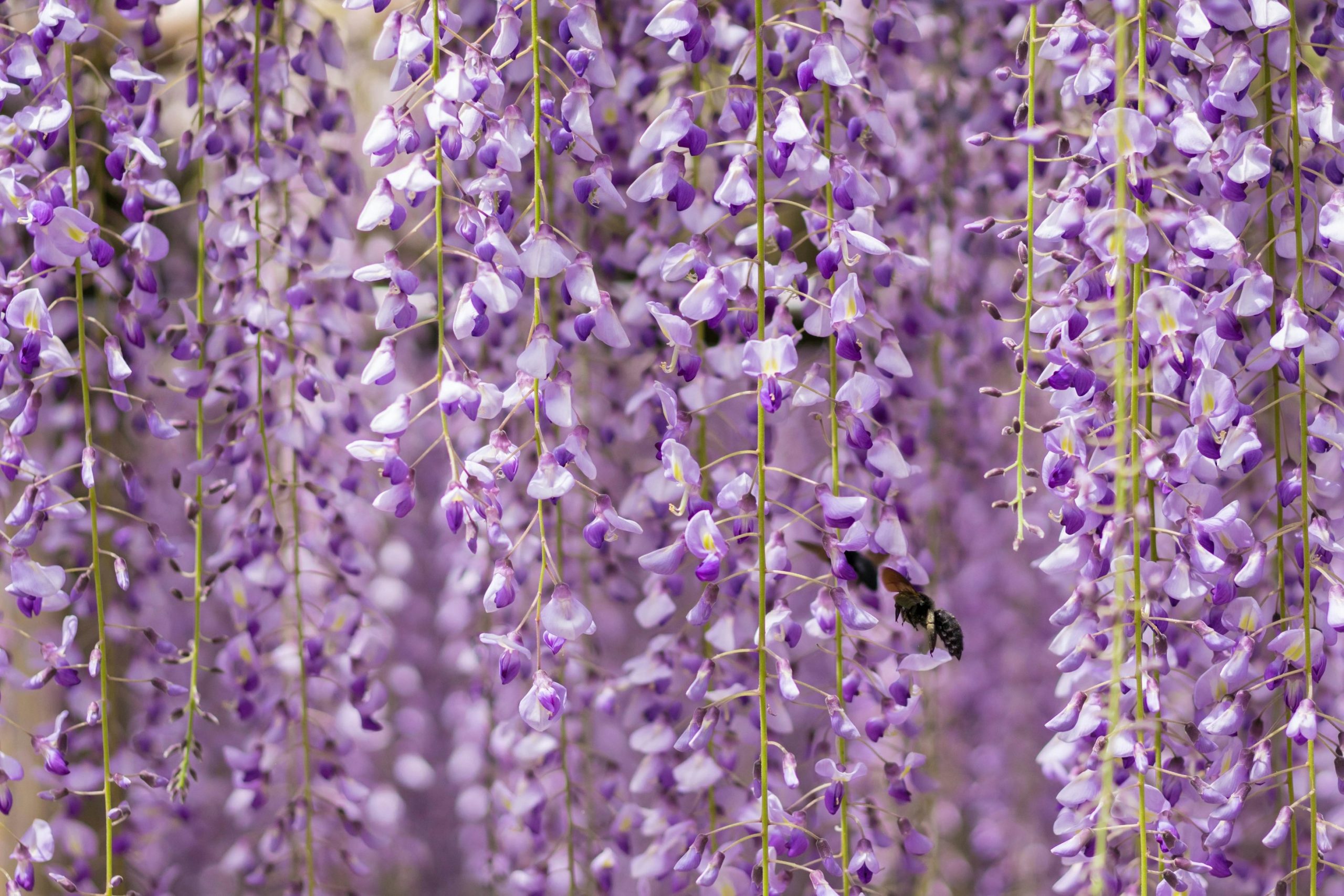


If you’ve ever tried to track down wisteria in London, you’ve probably ended up scrolling through Instagram wondering if you’ve missed the season entirely. Or worse, you’ve found a location, only to discover it’s a private house and you’re left awkwardly lurking outside someone’s front gate.
Wisteria season in Queen’s Park is short but spectacular. Those cascading purple blooms create some of the most striking spring visuals in London, but knowing when and where to find them makes all the difference. This guide will give you the full rundown on how to catch Queen’s Park’s best wisteria spots at their peak, how to avoid the crowds, and how to get that perfect shot.
Wisteria has a cult following for a reason. Those violet and lavender blooms don’t just look pretty — they signal the arrival of warmer weather and lighter evenings.
In Japan, wisteria represents longevity and resilience (some wisteria plants have been growing for over 100 years). In the UK, it’s more about the vibe — quiet spring streets, warm sun on your back, and the smell of fresh blooms in the air.
Queen’s Park might not be the first place that comes to mind for wisteria, but that’s what makes it special. Unlike the crowds you’ll find at Kew or Hampstead, Queen’s Park’s wisteria is more of a local secret, tucked away along quiet paths and climbing the front of old houses.
Wisteria season is short. It usually lasts about three to four weeks, and if you miss the window, you’re left with a bunch of bare vines and nothing to show for your effort.
If you want to see Queen’s Park’s wisteria at its best, you need to time your visit carefully. Here’s a quick guide to the most common questions and problems people face when chasing wisteria and how to avoid them.
Wisteria isn’t everywhere in Queen’s Park, so if you don’t know where to look, you could easily miss it.
The best wisteria in Queen’s Park is clustered around the residential streets just off the park, particularly along Milman Road and Peploe Road. There’s also a particularly impressive wisteria-covered wall near the Queen’s Park Café that’s perfect for photos. For a more natural look, head to the perimeter paths around the park where wisteria grows along the fences.
Wisteria is unpredictable. A mild winter or early heatwave can shift bloom times by a week or two.
It usually blooms from late April to mid-May. The first buds tend to appear in early April, with full bloom following within seven to ten days. Keeping an eye on local Instagram tags and park social media accounts will give you a good idea of when it’s starting to bloom.
Wisteria looks incredible in person, but in harsh sunlight, those delicate purple hues can get washed out on camera.
Early morning (before 9 a.m.) or golden hour (just before sunset) is ideal for soft, flattering light. Shooting upwards with the sky as a backdrop makes the blooms pop. Using portrait mode or a wide aperture helps blur the background and highlight the wisteria.
Wisteria’s bloom period is short, and bad weather can make it even shorter.
Blooming typically lasts three to four weeks if the weather is mild. Heavy rain or wind can cut the season down to two weeks or less. If you catch the first signs of petals falling, you’ve got about a week left to see it at its best.
Queen’s Park is great for wisteria, but if you want to make a day of it, there are other spots nearby.
Early morning light is best for capturing the rich purple hues. Use a wide aperture (low f-stop) to create a soft background blur. Frame the shot with wisteria hanging down from above — it gives a more natural, layered look. If the sky is overcast, the lighting will be even and less harsh, which works well for wisteria.
When does wisteria bloom in Queen’s Park?
Wisteria usually blooms from late April to mid-May. The first buds appear in early April, but peak bloom is around the second week of May.
What’s the best time of day to see wisteria?
Early morning is best for soft light and fewer people. Late afternoon (golden hour) is also great for warm tones and deeper colour.
Where are the best wisteria spots in Queen’s Park?
Milman Road and Peploe Road are the most reliable spots. The wall near Queen’s Park Café is also worth checking out.
How long does wisteria season last?
About three to four weeks, depending on the weather. A rainy spring can shorten the season.
Is wisteria hard to photograph?
It can be tricky in direct sunlight because the bright purple tones tend to blow out. Soft light (early morning or overcast skies) gives the best results.
Wisteria has been blooming earlier in recent years due to milder winters. The Royal Horticultural Society recently reported that peak bloom now tends to fall in late April rather than early May.
Wisteria is also growing in popularity on social media. Instagram posts tagged #wisteriahysteria have surged over the last five years, with Queen’s Park emerging as one of the lesser-known but increasingly popular locations.
Wisteria season is short, but catching it at peak bloom is worth the effort. Queen’s Park offers some of London’s most underrated wisteria displays, and because it’s not as crowded as Kew or Notting Hill, you can actually enjoy it without having to fight for a spot.
If you’re looking for a quiet, stunning floral display this spring, head to Queen’s Park in late April and don’t forget your camera.